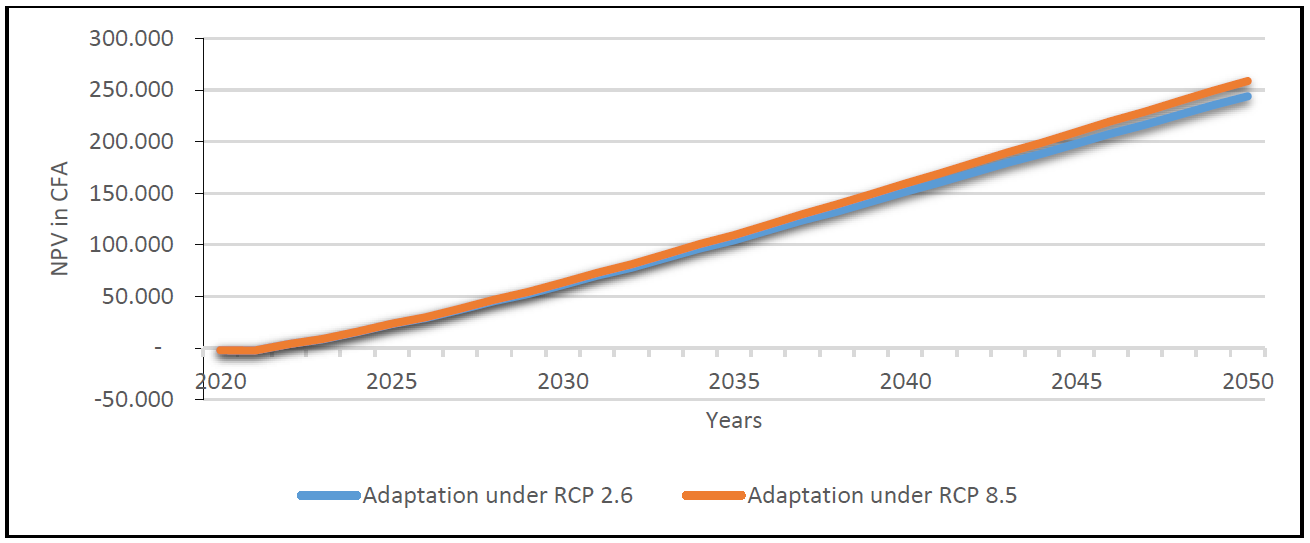Information and knowledge exchange are key to managing climate risks and mitigating climate-related impacts on agricultural crops, water resources and food security. Climate information services (CIS) can help to bridge existing information and knowledge gaps. Tall (2013) defines CIS as a timely decision aide based on climate information that assists individuals and organisations to improve ex-ante planning, policy and practical decision-making. CIS thus include the production, translation, dissemination and use of climate information for different target audiences, usually in climate-sensitive sectors, such as agriculture, water, health or disaster risk reduction (Carr, et al., 2020; Tall, 2013). According to Zongo et al. (2015), CIS usually provide seasonal estimates of the starting and ending dates of the rainy season, the length of the rainy season, the number of days with precipitation, the annual cumulative precipitation, and the average and maximum duration of dry spells during the rainy season.
Several studies have shown the positive impact of CIS on crop yields which underlines its great potential as an adaptation strategy. Having access to actionable climate information can help farmers to make informed decisions and thereby reduce the impact of climate risks. With a rather small-scale investment and its positive return, CIS represents a highly beneficial strategy. However, setting up well-functioning CIS requires high institutional and technical support.
Based on the literature review, multi-criteria assessment and CBA (see Figure 1), specific recommendations can be given to support the implementation of CIS:
- Awareness raising campaigns can help to inform farmers and rural communities about the great advantage of CIS and gain trust in the information received. Trainings on CIS can help farmers and especially rural women to fully understand the communicated information and to be able to act on it. Ensuring that women and other minority groups have equal access to CIS can help to promote gender equality in agricultural production.
- For now, existing communication channels (radio, television, word of mouth) represent the most effective way for CIS upscaling but new information channels (mobile phones, smartphones, internet-based devices) and sources are being developed throughout Burkina Faso and should be considered to reach maximum coverage.
- Access to modern information and communication technology (e.g. smartphone, internet) should be supported.
- CIS should be targeted to the various end-users needs. An analysis along the whole value chain and gender-disaggregated data can help to identify those needs and develop target-oriented formats and make communication more effective.
- When disseminating information through CIS it is crucial to ensure timely and actionable communication in the local language(s) and effective use of e.g. visualisation and audio formats to overcome the access barrier for poor educated or illiterate people.

References
- Carr, E. R., Goble, R., Rosko, H. M., Vaughan, C., & Hansen, J. (2020). Identifying Climate Information Services Users and Their Needs in Sub-Saharan Africa: A Review and Learning Agenda. Climate and Development, 12(1), 23–41. https://doi.org/10.1080/17565529.2019.1596061
- Tall, A. (2013). What Do We Mean by Climate Services? WMO Bulletin.
- Zongo, B., Diarra, A., Barbier, B., Zorom, M., Yacouba, H., & Dogot, T. (2015). Farmers’ Perception and Willingness to Pay for Climate Information in Burkina Faso. Journal of Agricultural Science, 8(1), 175. https://doi.org/10.5539/jas.v8n1p175


